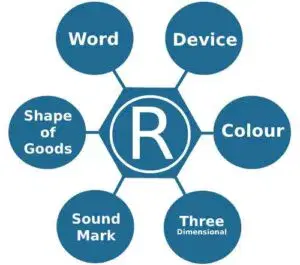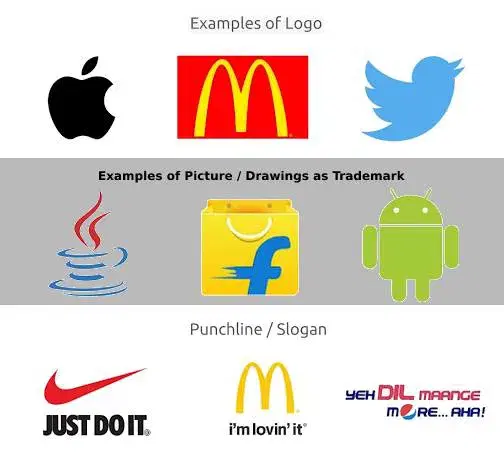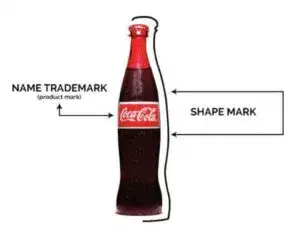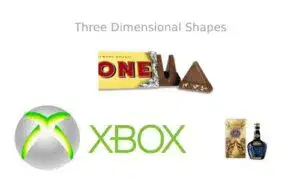Meaning & Types of Trademark
Register Logo, Brand & Domain
The first step towards registering a trademark is identifying the marks eligible for registration under the trademark laws. You are encouraged to speak with our IPR advisors to register your trademarks.
Request a Call Back
Trademark Is The Most Important Intellectual Property
Trademark is the most valuable asset for modern business. Hence a business owner or manager needs to understand the meaning of Trademark and Its Types. You may already know that a trademark is a unique mark or sign representing a business and distinguishes it from another firm. Every business has several IPR assets that qualify to a Trademark such as Name of Your Business, Brand Name, Label, Product Name, Logo, Punchline, and the Domain Names. We have seen that most of the trademarks of an enterprise remain unidentified and due to ignorance resulting in future dispute and litigation. We strongly advise our clients to understand the meaning of a trademark and take appropriate steps to secure the same.
Definition of Trademark Under the Trademark Act, 1999
The term Trademark is defined in section 2(zb) of the Trademarks Act, 1999, which mean a mark capable of graphical representation that can distinguish goods or services of one person from those of others. It is further provided that a Trademark may include the shape of goods, their packaging and a combination of colours.
Now, let’s understand the meaning of the term “Mark” Section 2(m) of the Act defines a Mark that includes following to be a Mark to include following. In other words following category of mark qualifies to be a Trademark if it satisfies the conditions prescribed in the definition of the Trademark stated above.
| Device Mark | Brand Name | Heading |
|---|---|---|
| Label | Ticket | Name |
| Signature | Word | Letter |
| Numeral | Shape of Goods | Packaging |
Types of Trademark Or Category In India
We have understood the meaning of the term Mark and Trademark in the above sections. Now let’s understand various Trademark categories that can be registered under the Trademarks Act, 1999. From the practical point of view, while filing the trademark application in TM-A (Earlier the name of the form was TM-1), the prescribed form for filing a trademark application in India, the applicant has to choose, category of Trademark, which can be only from below options. We would be described with illustration only about the below significant types of the Trademark.

"Word" as Trademark
A word or other groupings of letters/ alphabets is the most common type of mark. Examples include APPLE, GOOGLE, INFOSYS, TATA, IBM, .etc. The Word Mark as a Trademark is the most valuable and significant; a word work can be written, drawn, and pronounced. Because of its greater versatility is considered the Most Powerful Mark for IPR Protection Under the Trademark Act, 1999. When a Trademark is applied as a wordmark, you can use it in any format in the market. If some other person using a similar mark, the owner of the wordmark can easily institute an action of infringement. Please note that a Wordmark need not have a meaning, and any combination of letters is good enough provided it is unique.
"Device" as Trademark
Device marks are in general referred to the marks like Logo, Pictures of Drawings, A combination of Pictures and Words or Drawings, etc. Below is a pictorial presentation on various kinds of device marks. Another example of a device mark is the Brand Name, which is sometimes created as a combination of image and words. Below are some examples of the Device Mark.

"Colour" as Trademark
The particular colour or combination of colour is recognised as a trademark if it is established that the colour (s) function as a unique identifying mark to identify the origin of goods or services. In recent times there is a growing trend of adopting colours or combining them as a trademark in the marketplace. However, it is probably the most challenging trademark category to be protected under law and enforced. The world trade organisation has broadened the legal definition of a trademark to encompass “any sign…capable of distinguishing the goods or services of one undertaking from those of other undertakings.” Section 10 of the Trademark provides for recognition of a trademark having protection to its colour as property, provided that the particular colour or a combination of several colours are an inherent part of the TrademarkTrademark. In other words, the Registration to a Colour Mark is granted once the Trademark gets public recognition by that colour.
“Shape of goods” as Trademark
The shape of a product or the shape of a container may serve to identify the origin of goods. The shape of a container may also be another form of intellectual property as design. The trademark refers to the origin of the goods, whereas the design protection shall refer to the inherent features of the shape. However, if the shape has acquired distinctiveness through its widespread usage, then the same can be registered as a trademark. A perfect example to understand this is the Coca-Cola Bottle.

Sound as Trademark
Sound marks are a non-conventional trademark and are possible to be registered in India, provided the sound functions as an identifier for the origin of goods or services. The important ingredient is the presence of factual distinctiveness in the sound which is capable of creating an immediate recall value for the product or services. Some of the registered sound marks in India are:
Three dimensional shape as Trademark
Three-dimensional symbols can be registered as a trademark in India based on strict standards on the inherent distinctiveness of trademarks and its capability to distinctly identify the origin of goods and services. The three-dimensional trademarks (3D trademarks) are usually presented as the physical appearance of the product or substantial packaging in three-dimensional images. The examples of 3D Trademark is as under
